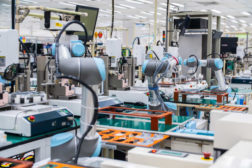White Papers
advertisement
Achieving Flexibility in Manufacturing with Power Distribution
August 31, 2022
advertisement
Optimizing your processes with the correct power tool for non-critical fastening
February 25, 2022
advertisement
Electrical Interconnect Solutions: A Look at What’s Driving Everyday Appliances
February 25, 2022
advertisement
Automation 201: A Deep Dive into Clarifying Your Requirements for Project Success
February 16, 2022
advertisement
Collaborative Robots and Machine Tending: The prosperous path forward
December 3, 2021
advertisement
Using piezoelectric sensors to measure dynamic force in semiconductor applications
December 3, 2021
Get our new eMagazine delivered to your inbox every month.
Stay in the know on the latest assembly trends.
SUBSCRIBE TODAY!Copyright ©2024. All Rights Reserved BNP Media.
Design, CMS, Hosting & Web Development :: ePublishing









